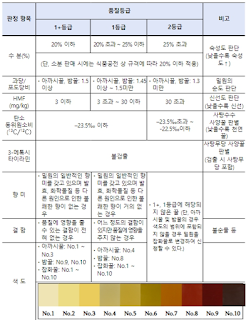Navigating Challenges: The Evolution of Honey Grading Standards
In a pivotal move for the beekeeping industry, the 'Detailed Standards for Grading Livestock Products' has officially come into effect, marking a decade since its initiation as a pilot project. This significant step, however, is not without its hurdles, with concerns emerging about the honey grading system's practical implementation, prompting a call for swift actions. 🍯📊
Focusing on Quality: 🌿🔍 The honey grading system primarily targets domestic natural honey varieties, such as acacia honey, chestnut honey, and wildflower honey. When honey producers or small-scale companies seek grading, the Beekeeping Association and the Beekeeping Cooperative conduct standard inspections, including moisture and natural honey content, using specialized equipment.
Grades Unveiled: 🏆🍯 For honey that passes initial inspections, the Korea Food and Drug Administration (KFDA) steps in for a secondary evaluation, assigning grades based on three standards: Premium (Premium-1+ grade), Special (Special-1 grade), and Standard (Standard-2 grade). This meticulous grading process aims to enhance the quality of domestic honey and provide transparent information to consumers.
The Grading System's Origin: 🌐📜 Introduced as a pilot project in 2014, the honey grading system seeks to elevate the quality of domestic honey amidst market liberalization under Free Trade Agreements (FTAs). It serves as a crucial alternative to distinguish domestic honey from imported ones, preventing the misrepresentation of sugar cane and sugar beet-derived honey as natural honey.
Challenges in the Honey Kingdom: 🏰🤔 Despite its noble intentions, the honey grading system faces challenges. Beekeeping associations and cooperatives lack inspection equipment, particularly for determining the natural origin of honey. Manpower shortage compounds this issue, with the current inspection system capable of handling only 20,000 cases annually, a mere fraction of the total honey production.
The Call for Support: 📣💼 A representative from the distribution industry emphasizes the need for active government involvement, especially at the provincial level. He stresses that expensive inspection equipment poses a burden on associations and agricultural cooperatives, urging authorities to provide solutions, support, and resources to foster the growth of the domestic beekeeping industry.
In the intricate world of honey grading, challenges persist, but the commitment to quality and transparency remains unwavering. The journey continues, guided by a collective effort to strengthen the roots of the domestic beekeeping industry. 🐝🌿
#HoneyGrading, #BeekeepingIndustry, #QualityStandards, #DomesticHoney, #EnvironmentalSustainability


